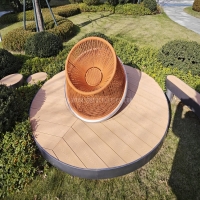Welcome to the website for landscape facilities products and knowledge.
How does the table’s surface handle spills, and is it stain-resistant?
Modern table surfaces are engineered with remarkable spill-management capabilities that combine practical functionality with advanced material science. The fundamental secret lies in the protective barriers integrated into contemporary table materials – whether it's the non-porous nature of tempered glass, the factory-applied sealants on wooden tables, or the inherent resistance of manufactured composites like quartz. When liquid encounters these treated surfaces, they create a temporary barrier that prevents immediate absorption, giving you crucial minutes to address accidents before permanent damage occurs.
Stain resistance varies significantly across table types. High-pressure laminate surfaces feature melamine resin that naturally repels moisture and resists coloring agents from common household substances. Natural stone tables like granite or marble receive penetrating sealers that fill microscopic pores, while wooden tables utilize polyurethane or lacquer coatings that create impermeable shields. Even concrete tables, once sealed properly, transform from porous surfaces to virtually non-absorbent platforms.
The cleaning methodology proves equally important. For most protected surfaces, immediate blotting (never wiping) with absorbent cloths prevents liquid spread. pH-neutral cleaners effectively address most food and beverage spills without damaging protective coatings. For stubborn stains like wine or oil, specialized poultices can draw out moisture from beneath the surface without compromising the table's integrity. Regular maintenance, including reapplying sealants annually for natural materials, ensures ongoing protection against both moisture and UV damage that can compromise stain resistance over time.
Manufacturing innovations continue to enhance these properties. Nano-scale ceramic coatings now provide molecular-level protection, while UV-cured finishes create harder, more durable surfaces. Some manufacturers even incorporate antimicrobial properties directly into table surfaces, creating multi-functional protection that maintains both aesthetic appeal and practical resilience against daily use challenges. Understanding your table's specific composition and protective features ensures you can confidently handle spills while preserving your furniture's beauty for years to come.
Related search:

Recommendation
Swivel chair-Specialty steel structure woven rattan leisure chair with rotatable design